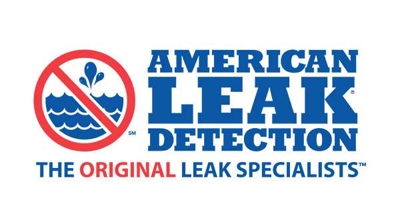Finding the source of an upstairs bathroom leak
If something is leaking in your upstairs bathroom, you will probably know by the stains on the ceiling below it. In some circumstances the ceiling will be continuously damp, and other times it may cycle between getting wet and drying. Another possibility is continuous dripping of water. All of these are signs of a leak you should take care of immediately, as a ceiling that collects moisture for too long can grow mold or even collapse.
Of course, you cannot start fixing a leak until you know where it’s coming from. Your bathroom has many different sources of water, so there are unfortunately a lot of possibilities.
Easy-to-find sources of a bathroom leak
Some leaks can be detected with the naked eye and require no advanced work. In the bathroom, these easy-to-find leak sources, as outlined in the San Francisco Chronicle, include the sink trap, the water supply lines (connected to the sink and toilet) and the wax ring under the toilet.
To determine if a leak is coming from the sink trap, all you have to do is watch the trap while the water is running to see if anything is leaking out.
To check the supply lines, simply run your finger over them. If you find a damp spot, it is probably the source of your leak. Depending on the severity of the leak, you may simply be able to tighten the loose line. If that doesn’t work you will probably need to replace it altogether. If you plan to do this yourself, make sure you bring the entire fitting to a hardware store so an expert can help you find a corresponding replacement.
If the leak is coming from the toilet’s wax ring, it won’t necessarily show up on the bathroom floor. Even if the floor around the toilet isn’t wet, make sure to revisit the wax ring as a possible leak source after you have exhausted all the others.
Bathroom leaks that are more difficult to find
If the supply line, sink trap and wax ring seem to be in order, your shower or bathtub could be the culprit. It may not be as easy to tell if one of these two is leaking. Because much of the drainage regarding the shower and bath are under the floor, you may have to cut a hole in the ceiling beneath to locate the leak.
It would be unfortunate to take such drastic measures and end up wrong about where the leak is coming from. Fox News suggested testing your theory by first avoiding use of the shower and bath for a few days. If the leak stops, one of them probably the leak source. Keep in mind: this trick will not work if the toilet is leaking, as water will drip through to the ceiling whether or not a leaky toilet is used.
If you do have to cut through the ceiling, remember that water has the potential to travel through the ceiling so the leaking pipe may not be directly beneath the water mark. You may end up having to cut through the ceiling along the pipe until you detect the source of the leak.
Drain line leaks vs. supply line leaks
The Chronicle emphasized that one way to tell the difference between a drain line leak and a supply line leak is the type of stain it leaves. Constant wetness generally means a supply line issue, whereas an area alternating between wet and dry is more likely a drain line leak.
Not a great leak finder? Consider bringing in a professional to help you.
For all of your leak needs, allow the professional leak finders of American Leak Detection to serve you. Call (866) 570-5325 to find a location near you.


